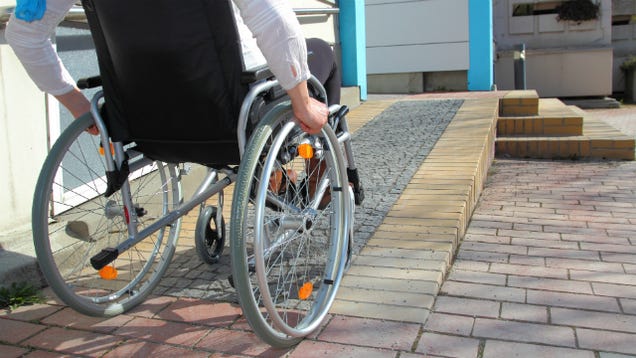Wheelchair Etiquette in 8 Easy Steps
By Anna Corbitt
As a user of a power wheelchair since I was five, I’ve become quite the expert on etiquette for interacting with someone in a wheelchair. As an extremely outspoken person, I haven’t hesitated to let people know that they should or shouldn’t do something with regard to a wheelchair. Here are some basic tips I believe everyone should take into consideration the next time they interact with a wheelchair user.
- Don’t lean on my chair. I’m a firm believer of personal boundaries. I barely like it when people I’m fond of get inside of my personal bubble, let alone someone I have never met. I like that my wheelchair expands my personal bubble a little further than usual. Whenever someone invades that boundary — especially when I don’t know them — it makes me irritable. People tend to lean on my armrest or the back of my seat. How would you feel if you’re at a concert and someone you’ve never met puts their elbow on your shoulder? Some people wouldn’t mind, but most people would. It’s the same thing. My chair is a part of me because I rely on it so much. I spend about 75 percent of my day in my chair. It’s my legs, so please don’t treat it like another piece of furniture. Note: I have read some articles that say wheelchair users want to be perceived as separate entities from their wheelchair. Great! We’re all different and have different opinions. To be sure, ask the person. Don’t assume.
- Respect my personal boundaries. Expanding off the first topic, respect my own bodily boundaries. One time I was standing next to my sister, talking to her and my dad, who was on the phone. My body language was not open and inviting. Someone still came up to me and held my arm (the one holding the phone). I stopped talking, looked at her and asked if she needed something. She just wanted to see how my arm felt. One, don’t interrupt my conversation to satisfy your own curiosity. Two, it is not OK to touch me. I barely hug my close friends. I’m not comfortable with being touched. This includes my arm, shoulder, leg (way too intimate) or head (which is patronizing).
- Focus on me, not the wheelchair. So often, I hear various types of phrases that place emphasis on my wheelchair and not on me as a person. Common phrases directed at my wheelchair and not at me are as follows:
- “Scooter girl.”
- “Slow down or I’ll give you a ticket.”
- “Hey speed demon.” (The person who says this uses it as a name, and I don’t think he’s ever used my name.)
- “Do you want to race?” (When this happens, I let the person run ahead of me like a fool while I just sit there and wait.)
- “Get out of the way!” This is commonly told to people around me, as though I’m going to slaughter anyone who dares get in front of me. Most the time, I’m just taking my time. If I have somewhere to go to, I’ll politely say, “Excuse me.”
- “Do you know what this thing needs …”A rocket?! No. First, this “thing” is my wheelchair, which is used for allowing me to independently move around without having to ask someone for help. Second, my wheelchair is perfect and it does everything it needs to do. I don’t need any recommendations.
- Don’t change your language use for me. Nothing makes it more obvious that you’re talking with someone “different” than when you change your usual phrases around the person. An example is, “Let’s go for a walk.” I’m not offended by someone saying “walk” instead of “roll.” Personally, I don’t like switching out words like that because it does place an emphasis on the fact that I use a wheelchair. I take my dog for a walk. If I took her for a roll, she wouldn’t be too interested...
Get the full list at Paraquad.
http://www.paraquad.org/blog/wheelchair-etiquette-8-easy-steps/











